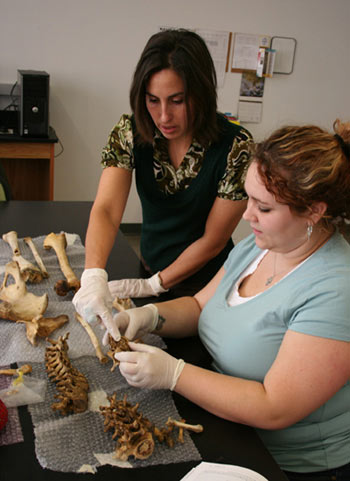Forensics Helps ID Victims of Murderous Dictator Pinochet

A new analysis of skeletons in a cemetery in Chile is helping medical examiners and others identify those who were killed or "disappeared" during the military dictatorship of Gen. Augusto Pinochet (1973–1990).
The results also may prove useful in identifying victims of the Chile earthquake, the researchers say.
While complete and well-preserved skeletons are relatively easy to identify, remains are often fragmented for natural or other reasons, making them tricky to ID.
The Pinochet deaths were part of a regime mandate "to cleanse the country of socialist ideologies while raising new economic and social programs," the researchers write in a forthcoming issue of the journal Forensic Science International.
When he realized people were onto him, that he was burying people in mass graves, [Pinochet] would go back with excavators and take the remains and dump them into the Pacific Ocean, study researcher Ann Ross, an associate professor of sociology and anthropology at NC State, told LiveScience. "Those were one of the major things that hindered investigations."
That meant hundreds of bodies were left unidentified.
Whether or not the work will be useful in IDing victims from the earthquake in Chile will depend on how complete those remains are, since the equation would only be needed for fragmentary remains, Ross said.
Sign up for the Live Science daily newsletter now
Get the world’s most fascinating discoveries delivered straight to your inbox.
For the past decade, forensic researchers like Ross have been developing identification criteria, such as height, build and other physical characteristics that can vary significantly from population to population and are important when attempting to identify human remains.
In the new study, Ross and Maria Jose Manneschi of the University of Chile, Santiago, evaluated remains of 139 females and 137 males from a 20th-century Chilean cemetery (Cementerio General at the University of Chile)to find these population-specific skeletal features. Then they developed stature criteria to translate lengths of long bones, such as the femur or the arm's tibia, into an individual's height.
Past methods for determining height are based primarily on Europeans and these overestimate stature for Chileans, the researchers found.
To figure out sex, the researchers measured the diameter of the head of the upper arm bone (humerus), femur head diameter and the circumference of the femur, resulting in accuracies of 87 percent, 86percent and 82 percent, respectively. This measure would only be needed if the pelvis were not available, as would be the case for fragmented remains from the Pinochet regime or even a natural disaster that buries and scatters remains.
Ross said she is very excited that the Human Rights Program, Medical Legal Service, Chile (Chilean government) is using the results to identify Pinochet's victims.
Jeanna Bryner is managing editor of Scientific American. Previously she was editor in chief of Live Science and, prior to that, an editor at Scholastic's Science World magazine. Bryner has an English degree from Salisbury University, a master's degree in biogeochemistry and environmental sciences from the University of Maryland and a graduate science journalism degree from New York University. She has worked as a biologist in Florida, where she monitored wetlands and did field surveys for endangered species, including the gorgeous Florida Scrub Jay. She also received an ocean sciences journalism fellowship from the Woods Hole Oceanographic Institution. She is a firm believer that science is for everyone and that just about everything can be viewed through the lens of science.
Why is yawning contagious?
Scientific consensus shows race is a human invention, not biological reality









